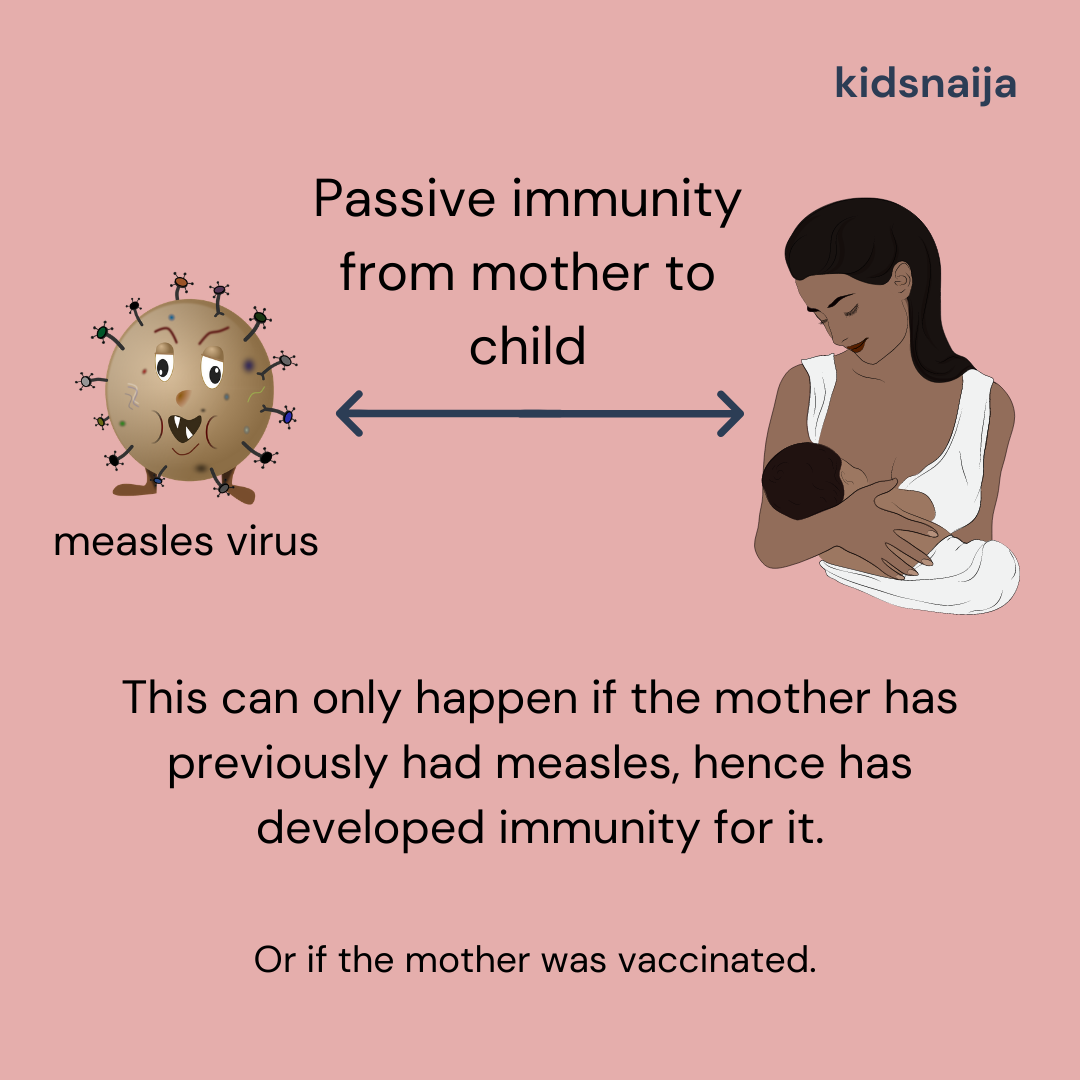“What are the signs of measles?” I asked myself again for the umpteenth time after examining my face in the mirror.
I had flat flaky rashes on my face that made me really uncomfortable because I thought it was measles. And I didn’t want to believe that I had escaped measles as a child only to get infected as a teen.
Before the vaccine for measles was developed, only a few adults could boast of not getting infected with measles during their childhood.
Measles in also medically known as Rubeola and it’s caused by the Rubeola virus, Morbillivirus. And children below the age of 5 are more likely to develop measles complications like pneumonia, encephalitis, ear infection, diarrhea etc.
Measles in Children
Measles is an infection that affects the immune system, respiratory system, and skin. It’s common in children and is characterized by skin rash and flu-like symptoms like fever and sore throat.
Measles was a major cause of death in both children and adults in the 1960’s, but reduced immensely after the production of vaccines.
But, even with the availability of vaccines that prevent measles in babies, a lot of children still die from measles infection.
Some babies receive passive immunity from their mothers through the placenta and during breastfeeding, but it’s not always enough to protect them from measles infection. Why? Because the immunity can be lost a few months after birth or after your little one stops breastfeeding.

Studies such as this agree that passively acquired immunity in infants starts declining from 2.6 months. Therefore, relying on passive immunity is not an efficient way of protecting your child from the measles virus.
If passive immunity does not protect babies against the measles virus, then what does? Simple, the measles vaccine.
WHO reported in 2019 that measles’ mortality rate surged by 50% between 2016 and 2019. This rise was attributed to the failure to vaccinate children on time and also due to the inadequate awareness of measles in many countries.
In a community where many children are unvaccinated, how can measles be caught early and treated? See below!
What are the symptoms of measles?
Measles baby rash is often the first pointer to measles for some parents. However, there are other signs and symptoms of measles that parents can look out for.
The signs/symptoms are grouped into four stages:
- Infection and incubation stage
In this stage the virus enters the body and settles there without showing any sign of its presence. The incubation period usually lasts for about 9 to 12 days.
- Catarrhal stage
This stage is marked by the presence of high fever. Other symptoms in this stage include:
- Cough
- Runny nose
- Sore throat
- Koplik’s spot (tiny white spots inside the mouth)
- Tightness in the chest
- Sensitivity to light, eye pain, headache, reduced appetite, irritability etc.
- The rash stage
A few days after the onset of the catarrhal stage, the rash appears starting from the face and the back of the ear, then it spreads to other parts of the body within 24 hours.
At this stage, the symptoms of the catarrhal stage becomes worse, but reduces gradually over the next few days.
- The recovery stage
You’d know your baby has entered the recovery stage after the rashes become flaky. Babies usually return to good health 10 – 14 days after the onset of the rash.
How long does measles last?
From the above stages, we can deduce that measles last for approximately 3 weeks after infection.
Causes of measles in children
Measles is caused by a species of Morbillivirus – a virus that causes gastrointestinal and respiratory system diseases and also weakens the immune system.
Survivors of Morbilliviruses often develop lifelong immunity against the virus. This is why measles mostly attacks a person once in a lifetime.
Other than the virus itself, there are a few risk factors that could increase your baby’s chances of contracting measles, they include:
- Not vaccinating your baby
- Living in a community where only few persons have received the vaccine
- Living with people who did not develop immunity against measles after vaccination
- Mothers that haven’t been vaccinated would not have any immunity against measles, hence, their infants are at a high risk of having measles.
- Because vitamin A helps the body fight against diseases and infections, a child who is vitamin A-deficient will not be able to repel the virus.
What does measles look like?
Most times people confuse Rubella (German measles) with measles because both diseases are characterized by a red rash. But they are entirely different in the sense that both diseases are caused by different pathogens.
Always remember that measles is characterized by a flat or slightly bumpy red rash that starts on the forehead and then spreads to the neck, chest, back, soles of the feet, as well as other parts of the body.
It is also accompanied by Koplik’s spot in the mouth and an extreme rise in temperature. Whereas, German measles do not have Koplik’s spots and it usually goes away on its own after a week. Rubella is mild but Rubeola isn’t.
Is measles contagious?
If you have more than one child, and one gets infected with measles, there’s a good chance that the other child/children or even you might get it too because measles is highly contagious.
Measles is airborne and the virus that causes it inhabits the droplets of their victims. Thus, it’s more likely to infect those that come in contact with surfaces that have been contaminated by these droplets.
It can also linger in the air for hours after it has been released and still remain very highly infective. They are also present in the rashes on the body of their victims and can easily be transmitted to people that touch the rash.
Children who are malnourished are highly susceptible to measles infection.
How to treat measles
- Measles is treated through supportive care; make sure your baby is always dehydrated and fed with nutritious meals.
- Doctors often prescribe pain relievers for the headache and body aches, and antibiotics for the ear and eye infections, as well as other medications in response to the symptoms.
- It’s advisable to vaccinate children who are 6 months of age with the measles vaccine, because it’s the most effective means of dealing with measles infection.
- Additionally, WHO recommends that children with measles, who live in communities with vitamin A deficiency, should be given 2 doses of vitamin A everyday for 2 days.
What happens if measles is left untreated?
There’s no specific treatment for measles, however, if left untreated, it leads to complications. These complications include ear infections, pneumonia, diarrhea, mouth ulcers, encephalitis (inflammation of the brain) or death.
How to prevent measles in children
- Vaccinate your baby against the measles virus. This is the best way to prevent your child from getting the disease.
- Do not take your baby to countries where measles are endemic unless the baby is vaccinated.
- Being deficient of vitamin A makes one vulnerable to measles attack; make sure your baby is rich in vitamin A.
- Keep your child away from people that are ill.
- Practice good hygiene. Clean and disinfect open surfaces in the house especially if there’s a sick person in the house.
- Avoid sharing personal items like brushes, spoons, plates, clothes with someone who is sick with measles.
- Avoid keeping your baby with people who have not been vaccinated against measles.
Keynotes
- What are the signs of measles? Rashes, Koplik’s spot, fever – these are the major signs.
- Malnourished children are prone to measles infection.
- Survivors of measles usually develop a lifelong immunity against the disease.
- Vaccination is the best way to prevent measles infection.
- Complications may arise in severe measles infections, which could lead to death.
- Measles is contagious.
After thorough research, it turns out that the rash on my face was an allergy rash – thanks to the medicated bathing soap I was using at that time.


